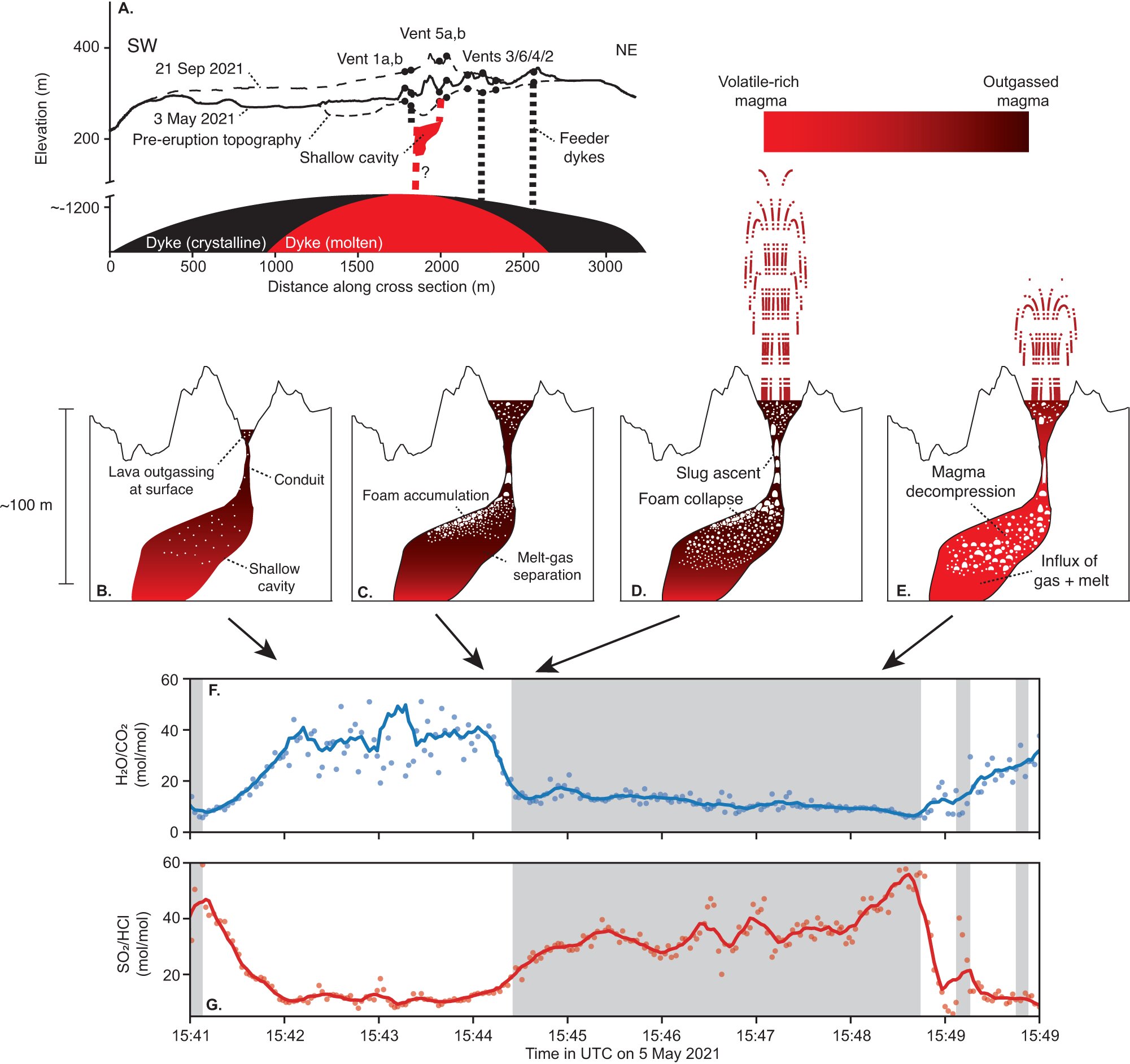A team of Earth scientists, meteorologists, geologists, and volcanologists from multiple institutions has developed a new theory to explain the nature of volcanic fountaining. In their project, reported in the journal Nature Communications, the group studied the 2021 eruption of the Fagradalsfjall volcano in Iceland, which produced what some have described as spectacular examples of volcanic fountaining.
Volcanic fountaining is when a volcano erupts as depicted in cartoons, with red-hot lava shooting straight up into the sky before falling back down to Earth and cascading down the sides of a caldera. How and why they form and what drives their energy is still not known, though some in the field have suggested it is due to rapid magma ascent. In this new effort, the research team took advantage of the unique characteristics of the Fagradalsfjall eruption to learn more about fountaining.
The eruption of Fagradalsfjall in 2021 did not happen all at once as a big blast. Instead, it occurred as a series of fountains of various heights. The fountains were also reasonably well contained, which allowed the researchers to move close to the action to learn more about what was driving the fountain formation.
To study the eruptions, the research team used a device that allowed them to conduct open-path Fourier transform infrared (OP-FTIR) spectroscopy on the gases emitted from the volcano over four cycles of eruption and pauses. Then, by studying the chemical composition of the gases, they found attributes that suggested an explanation for a volcano fountaining rather than simply blowing its top. And that led them to a theory.
The new theory suggests that volcanos like Fagradalsfjall have a shallow cavity beneath their caldera filled with magma. As magma ascends into the cavity, gases lead to a foam layer at the top of the magma inside the cavity. Collapse of the foam layer, the researchers suggest, is what leads to the pressure that pushes magma into the air, creating a fountain effect—like soda from a shaken can. The cyclic nature of such fountaining is due to gases repeatedly creating a foam layer inside the cavity.
2023-11-26 11:41:02
Article from phys.org rnrn



















